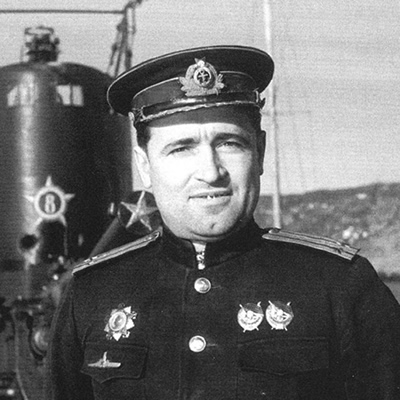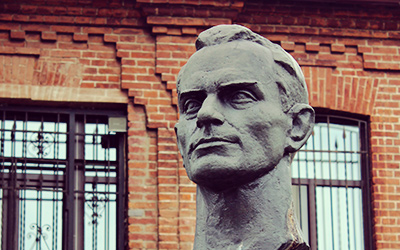The Underwater Guard
The Unsinkable S-56
Like most maritime cities, Vladivostok erects monuments dedicated not only to people, but also to ships. Perhaps the most interesting among them is the S-56 submarine.
The building of a diesel-electric Soviet S-class submarine S-56 (“S” stands for “Srednyaya”, which means “medium” in Russian) began in Leningrad (now known as St. Petersburg) and was completed in Vladivostok by the Dalzavod Ship Repair Center. She was launched and commissioned in October 1941. A year later, the sub made an unprecedented move for duty to the Northern Fleet — crossing both the Pacific and Atlantic Oceans.

Her commander, Captain 2nd Rank Gregory Shchedrin, was awarded the title of ‘Hero of the Soviet Union’.
In the north, the S-56 successfully fought against a fascist’s fleet. She engaged in eight military campaigns, sunk four targets (two warships and two cargo ships), and damaged numerous other targets. In 1944, the sub was awarded the ‘Order of the Red Banner’, and in 1945 she was honored with the prestigious ‘National Guard’ title.
The S-56 is believed to be the most successful Soviet submarine that fought in World War II, which is discussed in the documentary The Mystery of the Three Oceans, produced by Sergei Brilyov and released in 2014.
However, despite her outstanding record of sunk tonnage, the S-56 still can’t compete with the legendary Soviet submarine S-13, under the command of Captain Alexander Marinesko, and the Soviet minelayer submarine L-3. The S-13 sank the MV Wilhelm Gustloff, a German passenger ship, in the Baltic Sea. Considering the above facts, the S-56 is best referred to as the most efficient submarine of the Soviet Navy in the use of torpedoes.The S-56 continued its service in the Northern Fleet after the war and returned to the Pacific Ocean in 1954 via the Northern Sea route. This made her the first among Soviet submarines to perform an “around the world” journey. In 1975, to honor the 30th anniversary of the victory in World War II, the submarine was converted into a monument and was mounted on the central embankment (Korabelnaya Naberezhnaya) in Vladivostok, near the Navy Fleet headquarters. In order to move her from the docks to her new home, the submarine’s hull was cut into several parts and then was welded back together on the pedestal.
Today the Soviet S-class submarine S-56 is one of the highlights of the “Military Glory of the Pacific Navy Fleet” memorial complex. It is also listed as a branch of the Military Historical Museum of the Pacific Navy Fleet, meaning that her service, despite decommissioning, continues. The original interior of the submarine’s central and bow compartments is well preserved, so one can see real sailors’ bunks, peer inside the torpedo tube, and look out through the periscope.

They say that during the war, the “Fifty-Sixth” was declared dead 19 times, yet she always returned; and now she is unsinkable forever.
If you liked this article, share it with friends:
Come to Vladivostok!
We recommend
Tourist Attractions

Vladivostok International Auto Salon
An exhibition of the latest innovations in the automotive industry, celebration of fine tuning, the awesome roar of cars and crowds, and a head-spinning "crash show" in the technical Disneyland of the Far East.

Walking in Vladivostok, route 3 (in Arsenyev’s footsteps)
Arsenyev Museum – Ulitsa Svetlanskaya (Svetlanskaya Street) – Hotel "Versailles" – Kinoteatr "Okean" (Movie Theater "Ocean") – Makarov Square – Ulitsa Naberezhnaya (Seafront Street) – Chekhov Square – Ulitsa Pervaya morskaya (First Marine Street) – Ulitsa Arsenyeva (Arsenyeva Street) – Arsenyev’s Traveler House (Dom puteshestvennika Arsenyeva)

What to do in Vladivostok during the autumn
Prolong the summer, do a Momiji-gari, feel like Dersu Uzala, and become an expert in Pacific Russia Food.







